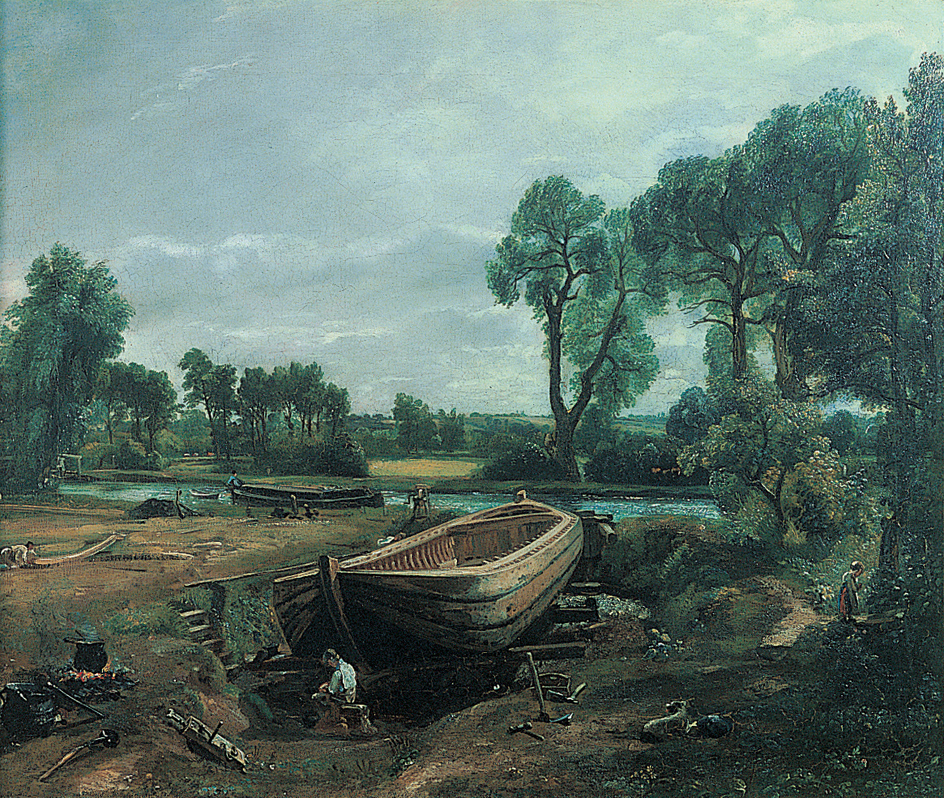Constable, John (1776-1837), ranks with J. M. W. Turner as the leading English landscape painter of the 1800’s. Constable is known mainly for his paintings of the rural areas near his birthplace and in other parts of eastern England. Constable sketched outdoors during the warmer months. During the winter, he worked in his studio and developed the sketches into paintings. Constable emphasized such environmental features as the appearance of the sky and clouds, and the effects of light and shadow on the landscape. He believed such features in a painting reflected nature accurately. Constable’s fresh style influenced the Impressionist painters of the late 1800’s.

Constable’s best-known paintings include The White Horse (1819), The Hay Wain (1821), and Stoke-by-Nayland (1836). Constable used vivid colors in many earlier paintings. After his wife died in 1828, he painted many dark, moody pictures that reflected his depression.
Constable was born on June 11, 1776, in East Bergholt, near Ipswich. In his youth, he began to draw the countryside near his home. A love of his native environment is apparent in all his work. Constable studied at the Royal Academy of Arts, beginning in 1799. He was elected a full member of the Academy in 1829. However, during his lifetime he received only limited recognition. He died on March 31, 1837.
